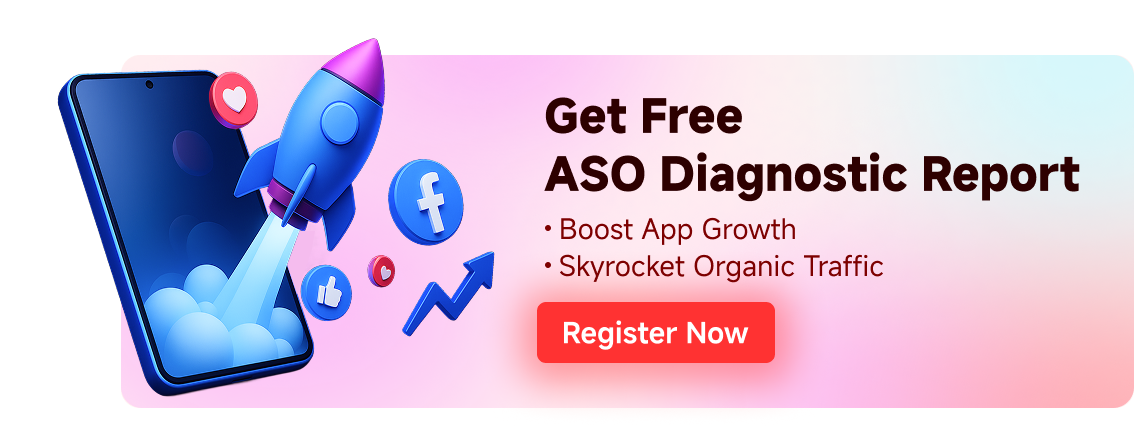Free consultation with ASO specialists
Doing ASO for the first time or have no idea how to carry out targeted optimization of your app?
We offer one-on-one customized services provided by app marketing specialists
Poor local keyword rankings? ASO fine-tuning solution
2025-08-26
The Importance of Localized ASO
Localized App Store Optimization (ASO) is a core element for apps to capture the global market. In different countries and language environments, users have significantly varying search habits and preferences. If localization is ignored, even high-quality apps may be overlooked by local users due to mismatched keywords or cultural barriers. For example, directly translating English keywords often fails to match the search intent of users in other languages, as different cultures express the same function differently. Therefore, localized keyword optimization for each target market is crucial.
Localizing ASO can significantly improve the visibility and downloads of apps in specific markets. Studies show that localizing app store information into users' native languages can increase downloads by approximately 38%. Other data indicates that adding a new localized language version to an app can lead to a download growth of up to 128% and a revenue increase of 26%. This means that keyword localization and metadata adaptation can directly translate into user growth and commercial benefits. Additionally, localization can enhance user trust and satisfaction, as users tend to prefer apps presented in familiar languages and aligned with local cultural habits.
However, most developers have misconceptions and insufficient execution in localizing ASO practices. According to statistics, more than half of apps fail to fully implement localized ASO when expanding into overseas markets, missing out on a large number of potential users. It should be clarified that localized ASO is not simply language translation; rather, it requires deep insights into local user behavior, cultural preferences, and search trends, as well as fine-tuning keywords, titles, descriptions, and visual materials. The following sections will analyze common reasons for poor rankings of localized keywords and provide targeted solutions.
Common reasons for poor local keyword rankings
The keyword ranking of the application in a specific market is not ideal, usually for the following reasons:
-
Improper keyword selection
No in-depth research has been conducted for the local market, and the selected keywords are either too competitive or disconnected from users' actual search habits (such as using popular English market words that are not searched by local users, or missing local slang and abbreviations), directly leading to ranking obstacles.
-
Inaccurate or awkward translation
Simple direct translation of English keywords can lead to lack of user resonance and even ambiguity. Local users may have specific terms or expressions for similar functions, and if the translation does not conform to language habits, it will reduce the probability of the application appearing in precise search results.
-
Metadata not localized
In addition to keywords, metadata such as titles, subtitles, and long descriptions are not localized, which will affect both rankings and conversions. The lack of local language keywords in the title will reduce search relevance; unlocalized descriptions and screenshots may make users feel "non-targeted", thus reducing clicks and downloads.
-
Competition and Weight Factors
In some markets, leading apps have already occupied high rankings for popular keywords. New or foreign apps without sufficient download volume, ratings, and other weight support will find it difficult to compete. In addition, if an app has low local download volume, user reviews, and activity indicators, even if keyword optimization is in place, its ranking improvement will be limited.
-
Ignoring local culture and trends
Different markets have unique cultural backgrounds and trends. If keywords and content do not integrate local cultural elements or fail to keep up with hot topics in a timely manner, user interest will decrease. For example, users in some regions pay more attention to certain types of application functions or prefer specific expression styles. Ignoring these details will directly affect keyword rankings.
After clarifying the above problems, we can formulate an optimization plan in a targeted manner. The following will provide specific localization ASO optimization strategies from the dimensions of keyword research, metadata optimization, visual material adjustment, user feedback utilization and data monitoring.
Localised Keyword Research and Selection
Localization keyword research is the core basis for improving the ranking of apps in specific markets. Developers need to deeply understand the real search behaviors of users in target markets and select keywords with low competition and high growth opportunities. The specific key steps and methods are as follows:
-
Use local ASO tools and data
With the help of professional ASO tools such as UPUP, obtain dynamic data of keywords in target countries/regions, including core indicators such as popular search terms, search volume and competition degree, and identify high-quality keywords with "high search volume and low competition". For example, some words that are not popular globally may have a high search volume in specific countries, which are opportunities worth focusing on.
-
Analyze local user search habits
Focus on the forms of commonly used search terms of target market users, covering synonyms, abbreviations, slang and long-tail phrases. You can use the automatic suggestion function of the app store to input core words related to the app and observe the local keywords in the drop-down prompts; at the same time, combine local Google search trends, Quora and other Q&A communities (or similar regional platforms) to gain insight into the common terms used by users when discussing topics related to the app, providing direction for keyword selection.
-
Competitor Analysis
Research the top-ranking competing apps in the local market and analyze their keyword layout strategies. Use ASO tools to view the keywords configured by competitors in the local app store and the search terms with high rankings, and explore keywords missed by competitors or niche words that have not been fully developed as optimization opportunities for yourself; meanwhile, refer to the keyword combination logic of competitors' titles and subtitles to extract reusable experience.
-
Consider language and cultural differences
Keywords in different languages vary significantly in length and structure (for example, Chinese users prefer longer search phrases, while some languages can express complex meanings with a single word). It is necessary to ensure that keywords conform to local language grammar and usage habits to avoid awkward expressions caused by direct translation. In addition, cultural differences must be taken into account; certain words may have special meanings or taboos in specific cultures, so they should be carefully selected to avoid offending users.
-
Balancing short tail and long tail keywords
Popular short-tail keywords (such as single words or general phrases) have high search volume but fierce competition, making it difficult for new apps to rank highly. Therefore, you should appropriately focus on long-tail keywords, which are more specific and longer phrases. These keywords have slightly lower search volume but less competition, making it easier for your app to rank higher. For example, instead of pursuing generic terms like "weather," consider long-tail keywords such as "real-time weather forecast." Long-tail keywords better match users' specific needs and can bring high-quality, targeted traffic.
Through the above steps, developers can build a localized keyword matrix for the target market, covering core functional words, user pain point words and local popular words, laying a solid foundation for subsequent metadata optimization.Meanwhile, ourKeyword Installation ServiceIt can help you quickly improve the rankings of core keywords and enhance keyword weights through real users' search and download behaviors.
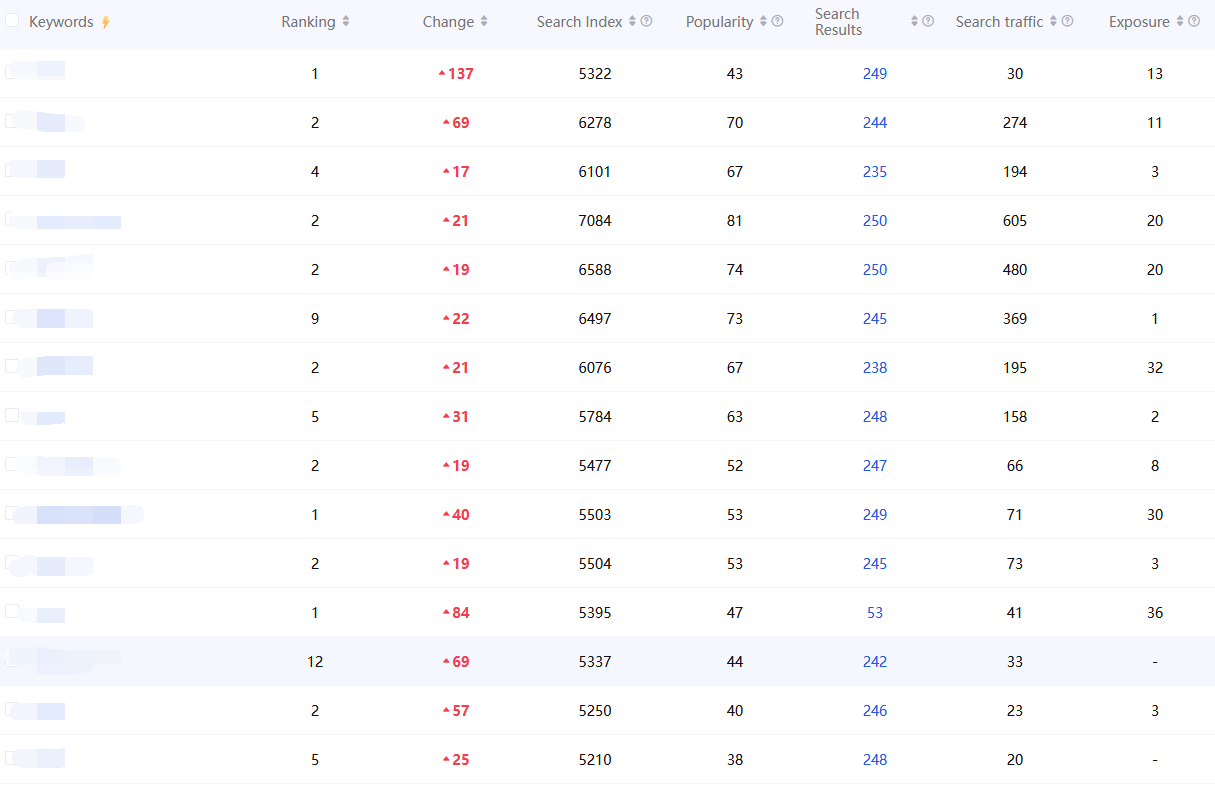
Localization Optimization of Metadata
After determining the localized keywords, they need to be naturally integrated into the application metadata (including title, App Store subtitle / Google Play short description, long description, etc.). Optimization needs to balance algorithm friendliness and user appeal, improving keyword relevance while also stimulating users' willingness to click and download.
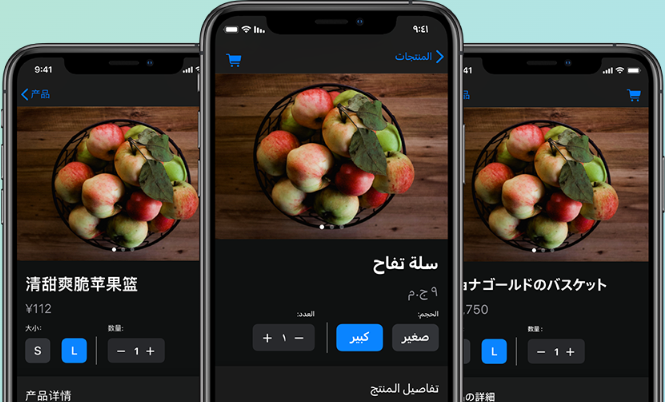
-
App Title Optimization
The title is the core display item in search results, and it needs to prioritize embedding core localized keywords while considering conciseness and attractiveness. It's important to note platform character limits: iOS titles can have a maximum of 30 characters, and Android titles can have a maximum of 50 characters, so word choice must be refined. For example, a travel app targeting the French market could set its title as "Voyages & Hôtels - Réserver Vol" (Travel Hotels - Book Flights), incorporating commonly used local terms such as "Voyages" (travel) and "Réserver Vol" (book flights). At the same time, ensure that the title is fluent and natural, avoid keyword stuffing, and highlight the application's unique value or brand name.
-
Subtitles/Short Description Optimization
The App Store subtitle (30 characters) and Google Play short description (80 characters) can supplement important keywords and core selling points not covered by the title. This content is partially displayed in search results or application lists, and needs to include secondary keywords and stimulate user interest.
-
Long Description Optimization
The long description provides developers with sufficient space to introduce application features, which can naturally embed more keywords. When localizing optimization, it needs to be written in the local language, clearly segmented, and highlights key points: reiterate the core advantages of the application at the beginning (embedding main keywords), then elaborate on key functions and user benefits point by point, appropriately incorporating relevant localized keywords into each point, but avoiding rigid stacking; meanwhile, ensure the description is fluent and persuasive, matching the reading habits of local users. Additionally, you can incorporate localized user reviews or success stories (such as "Trusted by 100,000 French users") to enhance credibility.
-
Keyword Field Optimization (iOS only)
The Apple App Store supports filling in a keyword field of up to 100 characters (separated by commas between keywords). In localized ASO, independent keyword sets need to be configured for each language region. The important keywords obtained from research should be filled in as much as possible, avoiding repeated words and prohibited words (such as competitor names); due to the limited number of characters, high search volume and highly relevant words should be prioritized, while long-tail compound words are also used.
Through the above metadata localization adjustment, the relevance and attractiveness of applications in the search results of the target market will be significantly improved. It should be emphasized that keywords need to be naturally integrated into the content, consistent with semantic logic and user reading habits, rather than mechanical listing - this not only helps improve algorithm ratings, but also enables users to quickly identify the application as a match for their needs.
Visual MaterialLocalization Adjustments
Visual materials in app stores (icons, screenshots, preview videos, etc.) directly affect users' first impression and download decisions. Localization is not limited to text translation; it also requires synchronous adaptation of visual elements. Optimizing for specific markets can significantly improve conversion rates and user satisfaction. Specific points are as follows:
-
Icon localization
Application icons are mostly standardized globally to strengthen brand recognition, but minor adaptations can be made for specific markets: such as adjusting color combinations or element meanings based on local cultural preferences; if the icon contains explanatory text beyond the brand logo, it must also be localized accordingly. At the same time, ensure that the icon has no negative connotations in the local culture and remains clearly recognizable at small sizes.
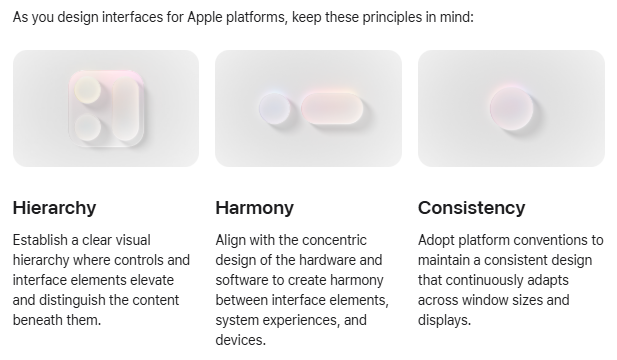
-
Screenshots and Preview Videos
Screenshots and preview videos are the core carriers for delivering application functions and scenarios. Localization requires replacing or supplementing content that fits local culture, such as displaying local landmarks, interfaces in local languages, and familiar scenarios to enhance user immersion. If the application supports multiple languages, the screenshot interface must match the local language to avoid confusion caused by language mismatch after clicking. When conditions permit, a localized version of the preview video can be produced with local language voiceovers/subtitles, highlighting features of interest to local users.
-
Text annotations and descriptions
Text annotations / descriptions used in screenshots to highlight feature highlights must be fully localized: use the target market language and conform to local reading habits (for example, Arabic text must follow the right-to-left direction); font and font size must be adapted to local text display to ensure clear readability on multiple devices.
-
Cultural Sensitivity and Preferences
Preferences and taboos of visual elements vary in different regions: for example, some colors have different meanings in specific cultures, and some images may cause negative feelings. Elements that may cause misunderstanding or negative feelings should be avoided. You can refer to the visual style of local leading competitors / popular apps to clarify user preference types (for example, some markets prefer bright-colored screenshots with dense information, while others prefer simple and elegant styles).
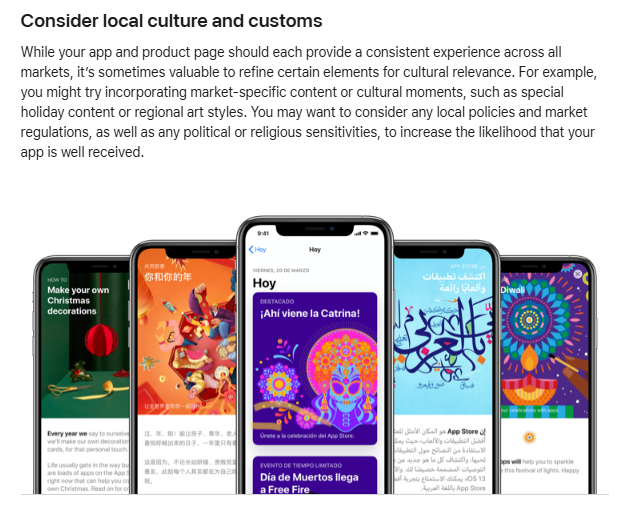
-
Screenshot order and storyboarding
The screenshots of each market must follow the logic of "from overall to details, from attraction to persuasion": the first screenshot needs to highlight the core functions / main highlights to quickly attract users' attention; subsequent screenshots can present key functions, usage scenarios, user reviews, etc. In localization, the order can be adjusted according to the local users' core concerns, such as privacy and security, which European users pay more attention to, so the relevant screenshots can be placed in front.
Localized visual materials can make the app product page more friendly and persuasive - users will have a sense of "tailor-made" when browsing, thus increasing their willingness to click. Studies show that localized app store pages can enhance user familiarity and trust, directly improving download conversion rates. It is clear that fine-grained adaptation at the visual level is the core link of localized ASO.
Optimize localized keywords using user feedback
User feedback is a valuable resource for localized ASO. After the app is launched in the target market, keywords can be optimized by analyzing user reviews and ratings. User reviews can truly reflect their cognition and needs of the app, including commonly used words describing functions, advantages and disadvantages. Based on this, uncovered localized keywords can be supplemented or strategies adjusted to adapt to user needs. The specific methods are as follows:
-
Accurately collect user reviews
Regularly collect user reviews (including positive and negative feedback) from the target market app stores, use the app store's back-end management tools or third-party ASO review analysis functions to summarize and classify feedback, and efficiently filter valuable information.
-
Extracting keywords and core pain points
Extract high-frequency words and phrases from reviews (especially those describing application features or issues), as these words often closely match user search habits. For example, if many French users frequently mention "facile à utiliser" (easy to use) and "prix raisonnable" (reasonable price), these phrases can be included in the French keyword library or application description to strengthen the perception of the corresponding advantages of the application.
-
Timely response and function improvement
For the questions and suggestions raised by users, we need to respond quickly and implement improvements: responding to reviews in app stores can not only improve user satisfaction but also convey an image of active service from developers to potential users; if users frequently report missing features or bugs, they should be prioritized for repair in updates. This can improve application ratings and reputation, indirectly helping keyword rankings (high ratings and active updates are both key factors in ASO rankings).
-
Use Ratings and Reviews to Improve Conversions
High ratings and positive reviews are the core conversion tools. If an application receives good reviews locally, developers can appropriately quote them in the application description or promotional materials (of course, they must comply with platform regulations). Enhance user trust through social proof to further improve download conversion rates.
In summary, user feedback is the "calibration mirror" for localized ASO. By listening to user needs, developers can continuously optimize keyword strategies and application experience, making products more aligned with local user expectations. This user-centered optimization model can both improve keyword rankings and strengthen user retention and reputation, forming a positive ASO cycle.
Data Monitoring and Continuous Optimization
Local ASO is a dynamic iterative process, not a one-time operation. Because the search algorithm of app stores and user behavior are constantly changing, developers need to build a data monitoring mechanism, regularly evaluate the effect, and adjust the strategy according to feedback. The specific actions are as follows:
-
Track keyword rankings动态
Regularly check the rankings of target market keywords using ASO tools, focusing on the improvement of optimized keywords: if some keywords consistently fail to reach ideal rankings, re-examine keyword selection or strengthen metadata optimization; for keywords that have achieved high rankings, continuous monitoring is required to avoid ranking declines due to intensified competition or algorithm updates.
-
Analyze download and conversion data
Based on core indicators such as downloads, page views (PV), and conversion rate (downloads/PV) from the app store backend, evaluate the effect of localization adjustments: if natural downloads and conversion rates significantly increase after optimizing keywords and screenshots for a certain market, it indicates that the strategy is effective; if the data does not improve or even declines, review the optimization measures and identify the root cause of the problem.
-
Landing A/B test verification
Use the built-in A/B testing function of the app store (such as Google Play material experiment, Apple custom product page test) to verify the effect of different localization schemes. For example, make two versions of screenshots/descriptions for the target market, compare the conversion rate through testing, and select the version with better performance to officially launch - data-driven testing can quickly lock the optimal ASO scheme.
-
Keep an eye on market trends and algorithm updates
Closely monitor policy adjustments and algorithm iterations in app stores (such as Apple's new In-App Events, Google's launch of custom store listings, or changes in ranking algorithms), adapt promptly to maintain competitiveness; meanwhile, track industry trends and seasonal hotspots in the target market (such as specific search demands during holidays), and proactively plan relevant optimizations.
-
Regular review and strategy iteration
It is recommended to conduct a comprehensive local ASO review every quarter or half-year, reviewing data such as keyword rankings, download growth, and user reviews in each market, and summarizing experiences and shortcomings; based on the review results, formulate subsequent plans, such as adding target markets, adjusting the keyword library, updating visual materials, etc. Local ASO needs to keep up with the times and continuous investment to maintain good rankings and download performance in the long term.
With the help of a perfect data monitoring and optimization mechanism, developers can identify problems in time, adjust strategies, and maximize the effect of local ASO. It should be noted that the effect of ASO is not immediate. Developers need to be patient and meticulous, continuously observe and fine-tune. Under the premise of correct direction and proper strategy, this will bring stable natural traffic and user growth to the application.
Want to know if your metadata is optimized? We provide free metadata diagnostic service to help you discover optimization space and improve the exposure and conversion of your app in the local market.
Conclusion: Call to Action to Improve Local ASO
Poor local keyword rankings? Through the above refined ASO adjustment plan, developers can significantly improve their app's performance in specific markets. From in-depth local keyword research and metadata and visual material adaptation to continuous iteration based on user feedback and data monitoring, each step focuses on the core goal—aligning the app with local users' needs and usage habits. When users can precisely reach the app when searching, see familiar language and content after clicking, and perceive demand matching after downloading, they will gradually become loyal users.
ASO optimization has no end. In the current context of intensified competition in the global application market, localized ASO has become a necessary condition for applications to break through. The strategies and cases described in this article can help you find an effective path to improve the rankings of localized keywords. It is recommended that you immediately start ASO optimization for your target market.
If you need professional support for localizing ASO or obtaining more resources, please register on our platform.Get Customized Optimization SolutionWith the latest industry reports. We look forward to working with you to explore the global market of apps through refined ASO operations, and achieve new breakthroughs in downloads and user growth!
Related recommendations
